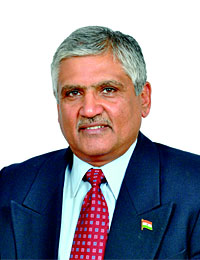Publisher’s Note
 Proper oil sampling is critical to an effective oil analysis program. Without a representative sample, further oil analysis endeavours are pointless.
Proper oil sampling is critical to an effective oil analysis program. Without a representative sample, further oil analysis endeavours are pointless.
There are two primary goals in obtaining a representative oil sample. The first goal is to maximize data density. The sample should be taken in a way that ensures there is as much information per millilitre of oil as possible. This information relates to such criteria as cleanliness and dryness of the oil, depletion of additives, and the presence of wear particles being generated by the machine.
The second goal is to minimize data disturbance. The sample should be extracted so that the concentration of information is uniform, consistent and representative. It is important to make sure that the sample does not become contaminated during the sampling process. This can distort and disturb the data, making it difficult to distinguish what was originally in the oil from what came into the oil during the sampling process.
To ensure good data density and minimum data disturbance in oil sampling, the sampling procedure, sampling device and sampling location should be considered. The procedure by which a sample is drawn is critical to the success of oil analysis. Sampling procedures should be documented and followed uniformly by all members of the oil analysis team. This ensures consistency in oil analysis data and helps to institutionalize oil analysis within the organization.
In establishing a filtration program, several factors must be considered, such as the type of filtration device, type of contaminant being filtered (water or particles), the viscosity of the lubricant, and the type and location of the machine.
A bulk storage tank and larger, more critical machines may use dedicated piping in their filtration systems, while smaller, less critical units may employ portable filtration. These portable systems can be easily transferred from one machine to another. However, to avoid cross- contamination, it is best to have a dedicated filter system for each lubricant viscosity.
A successful oil analysis program requires an investment of time and money to make sure the proper sampling hardware is fitted to the machinery. It is important to understand that not all locations in a machine will produce the same data.
We would like to thank our readers for the great response to our previous edition’s cover story – “Extending Oil Change Intervals: How to manage the unintended consequences”. Our current issue’s cover story is “Oil Sampling and Filtering: How to Save Money and Reduce Your Carbon Footprint” which will help our readers to know about oil sampling program and the impact of improved filtration and sampling practices. You will find much more in this edition.
The threat of COVID-19 causing massive outbreaks that overwhelm health systems around the world is serious. This is a global issue but sooner or later we shall overcome this situation.
Read ‘Machinery Lubrication India’ during this home quarantine!!
Stay Safe.
As always, we welcome your feedback & suggestions.
Warm regards,
Udey Dhir
